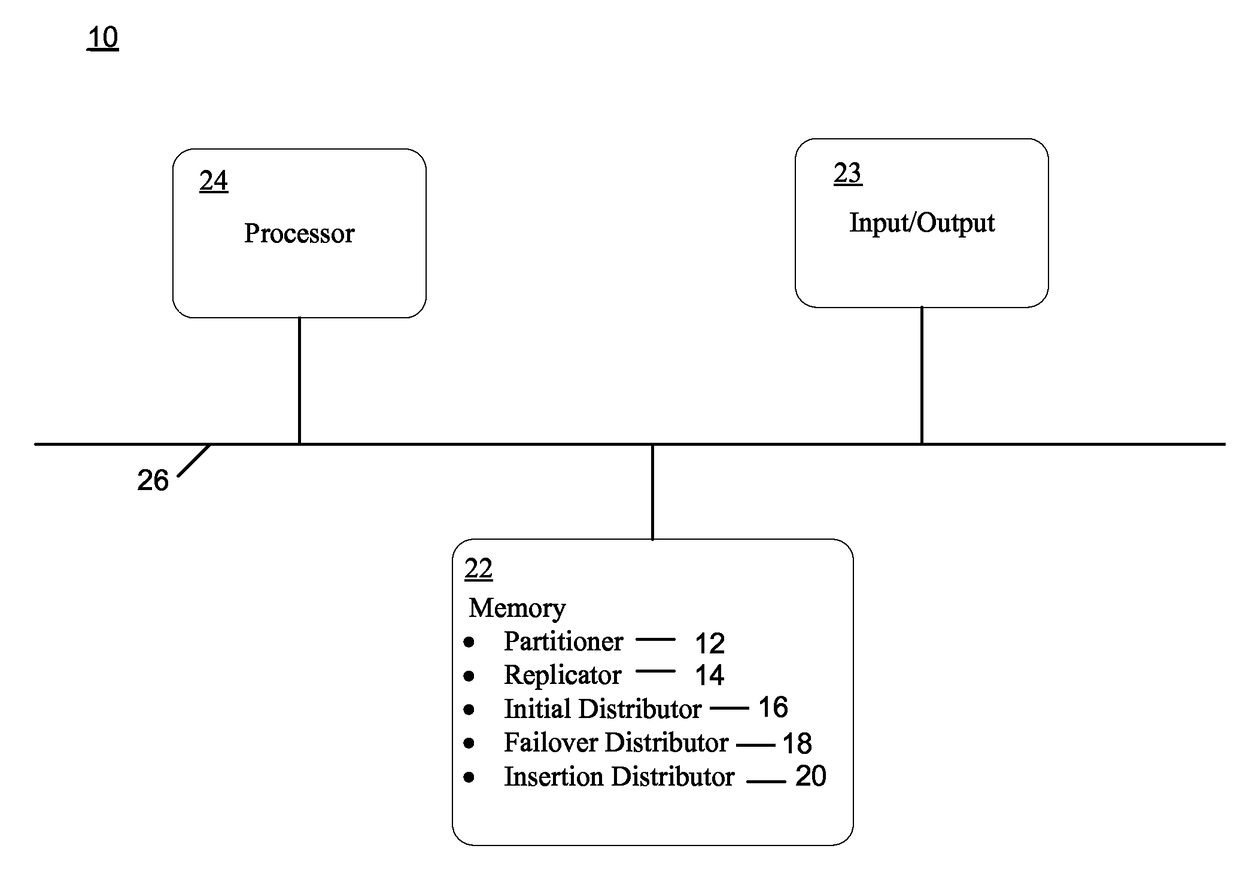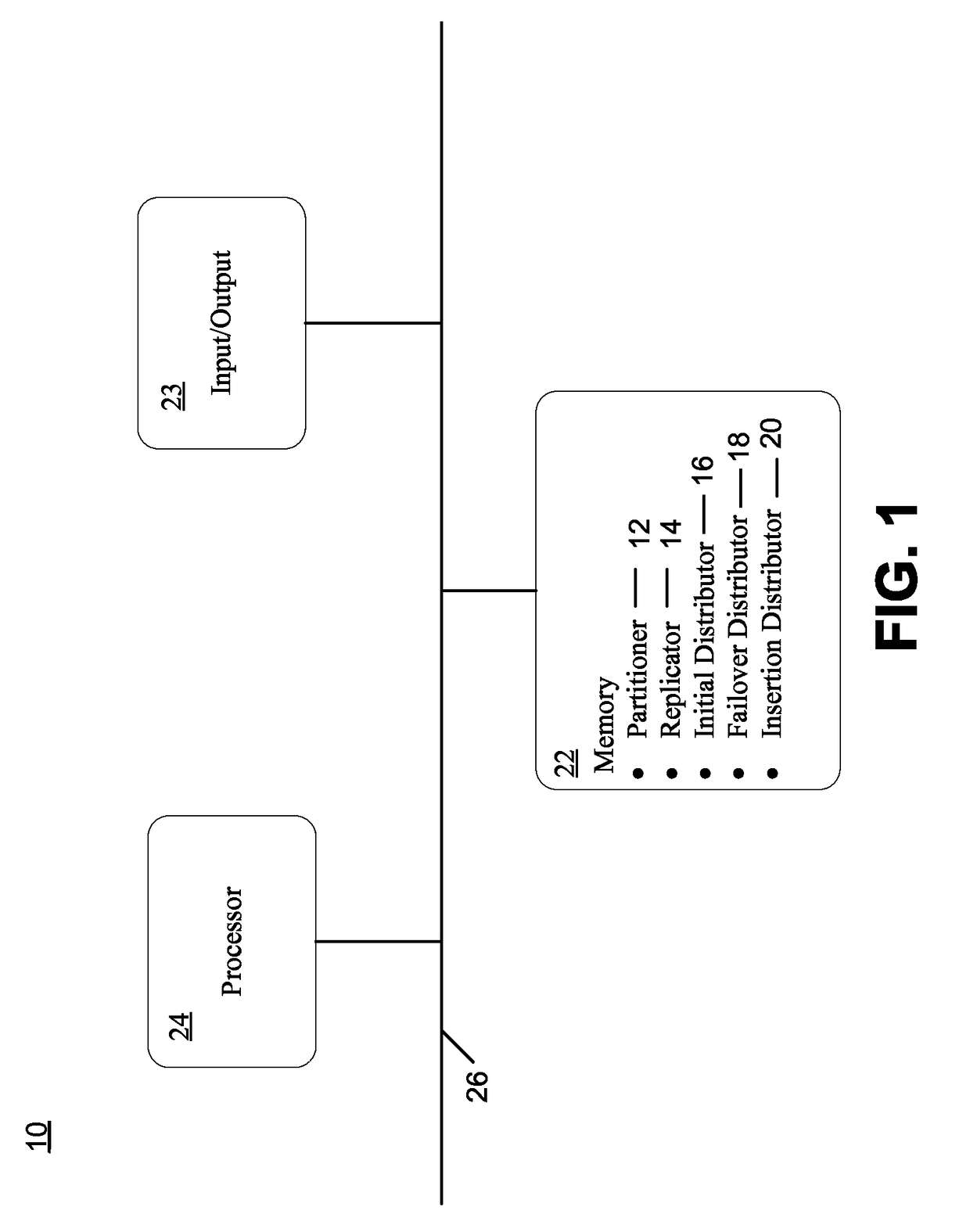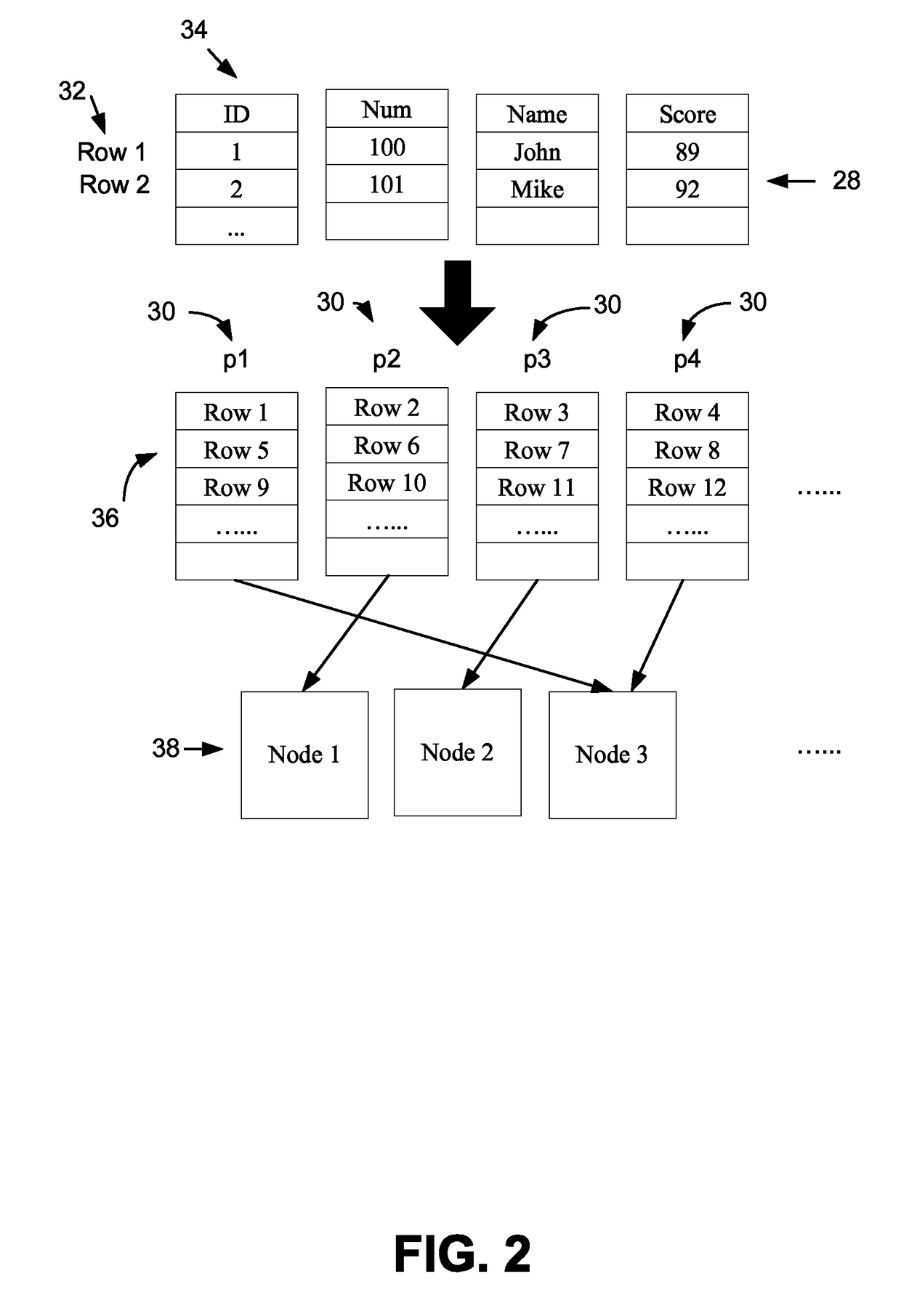Replicated database distribution for workload balancing after cluster reconfiguration
a replication database and cluster reconfiguration technology, applied in the field of distributed databases, can solve the problems of unbalanced workload, data stored on the failed server can become unavailable to the cluster, and workload balance generally has not been given high design priority
- Summary
- Abstract
- Description
- Claims
- Application Information
AI Technical Summary
Benefits of technology
Problems solved by technology
Method used
Image
Examples
Embodiment Construction
[0021]An embodiment in accordance with the present invention is shown in FIG. 1, which illustrates an apparatus 10 for partitioning, replicating and distributing information data associated with a database among multiple interconnected servers. The apparatus 10 can be implemented, for example, in one or more relational database management system coordinator nodes, data nodes, or any combination of these. The apparatus 10 includes an input / output device 23, a memory 22 and a processor 24, all of which are interconnected by a data link 26. The memory 22 contains a partitioner 12, a replicator 14, an initial distributor 16, a failover distributor 18 and an insertion distributor 20.
[0022]Use of the apparatus 10 can result in improved workload balancing while maintaining data redundancy and providing high data availability with respect to existing file distribution systems. In particular, use of the apparatus 10 can result in improved workload balancing with respect to existing placement...
PUM
 Login to View More
Login to View More Abstract
Description
Claims
Application Information
 Login to View More
Login to View More - R&D
- Intellectual Property
- Life Sciences
- Materials
- Tech Scout
- Unparalleled Data Quality
- Higher Quality Content
- 60% Fewer Hallucinations
Browse by: Latest US Patents, China's latest patents, Technical Efficacy Thesaurus, Application Domain, Technology Topic, Popular Technical Reports.
© 2025 PatSnap. All rights reserved.Legal|Privacy policy|Modern Slavery Act Transparency Statement|Sitemap|About US| Contact US: help@patsnap.com



